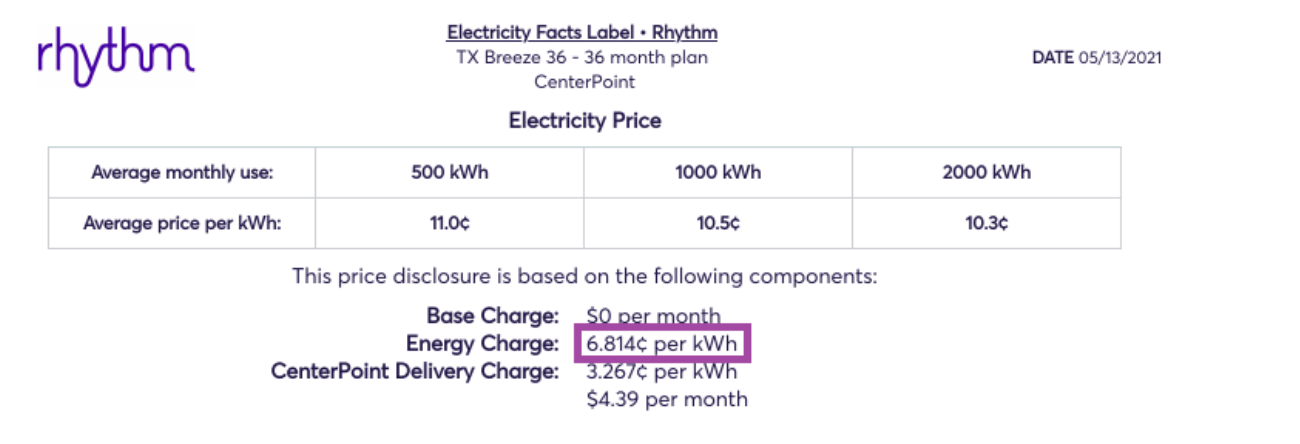Math can be scary. But we’re here to break down how to calculate your true energy rate for electricity, so you can make wiser decisions about the best energy plan for you (AKA the one that lines up best with your energy usage each month so you can save money).
Many Texans use price comparison sites when they are shopping for an energy plan. These websites often use a single number—cents per kilowatt-hour—to compare energy prices and plans across energy providers. They’ll then ask you to guess your monthly energy usage—usually in increments of 500 kWh—and whittle down choices from there. The problem with this comparison is that while it makes searching through energy plans simple, it doesn’t really show you your true energy rate. After all, who can predict their energy use? Nobody.
So to help with that, below is a quick way to calculate your average energy price, so you can better understand how your current plan and a potential new plan compare.
YOUR CURRENT ENERGY PLAN
First, let’s start with your current electric bill. Every electricity bill should have a section like the one below, where the average price you pay is clearly identified for that bill period. The average price is calculated by adding the energy charges from your retail electricity provider (including any base charges or minimum fees) and Transmission and Distribution Utility (TDU) charges from your utility. It is calculated before taxes and any other fees, so it is a great number to use as a comparison when looking at a new plan for a better electricity rate.
THE FORMULA: (Energy Charge + Base Charge (if applicable) + Minimum Fee (if applicable) + TDU Customer Charge + TDU Usage Charge) / kWh used that month = Average Price

COMPARING ENERGY PLANS
When you are looking at a potential new plan option, you can find all the information you need to calculate the energy rate you will pay in that plan’s Electricity Facts Label (EFL). Think of the EFL like a nutrition label for an energy plan, where everything is spelled out. Some electricity providers make calculating what you pay on this label easy to identify (like Rhythm Energy).

Here, the energy charge is 6.184 cents per kWh, which does not include the delivery charge from your TDU (CenterPoint in this case). The TDU charges from your utility will be the same, no matter what energy provider you choose. So, when you are looking to compare electricity costs and rates across providers, you should focus simply on the energy charge and any other charges or fees an electric company includes in their EFL to get to a comparable rate.
The main takeaway: Always make sure to click “Fact Sheet” or “EFL” and see if the price changes across 500, 1,000, and 2,000 kWh. And by how much.
Learn more about what's on your electricity bill by visiting our blogs:
Energy Plans in Texas
Hidden fees and gotchas are part of a lot of other electricity companies’ plans. They assume you won’t notice high electricity rates and fees, and you’ll pay it without thinking twice. That’s simply not our style. We want you to save money.
At Rhythm Energy we don’t charge ANY hidden fees. Because we’re all about transparency. There are three instances we’d charge you, and they’re clearly stated.
We charge late fees if your electric bill payment is past due or if there are insufficient funds in your account.
We charge fees if you leave us after your first 30 days, but before your contract is up.
We pass along fees and charges without markup from your wires provider for use of the power grid.
We charge you a disconnect transaction fee if Rhythm Energy disconnects you for non-payment.
If you want to learn more about how a Rhythm Energy electricity plan can help your wallet and your planet, we’re here for you. Simply sign up for one of our Texas renewable energy plans online. We’re also happy to walk you through all this math, so you can pick the plan that best serves your needs. Because being transparent is what we’re built on.




